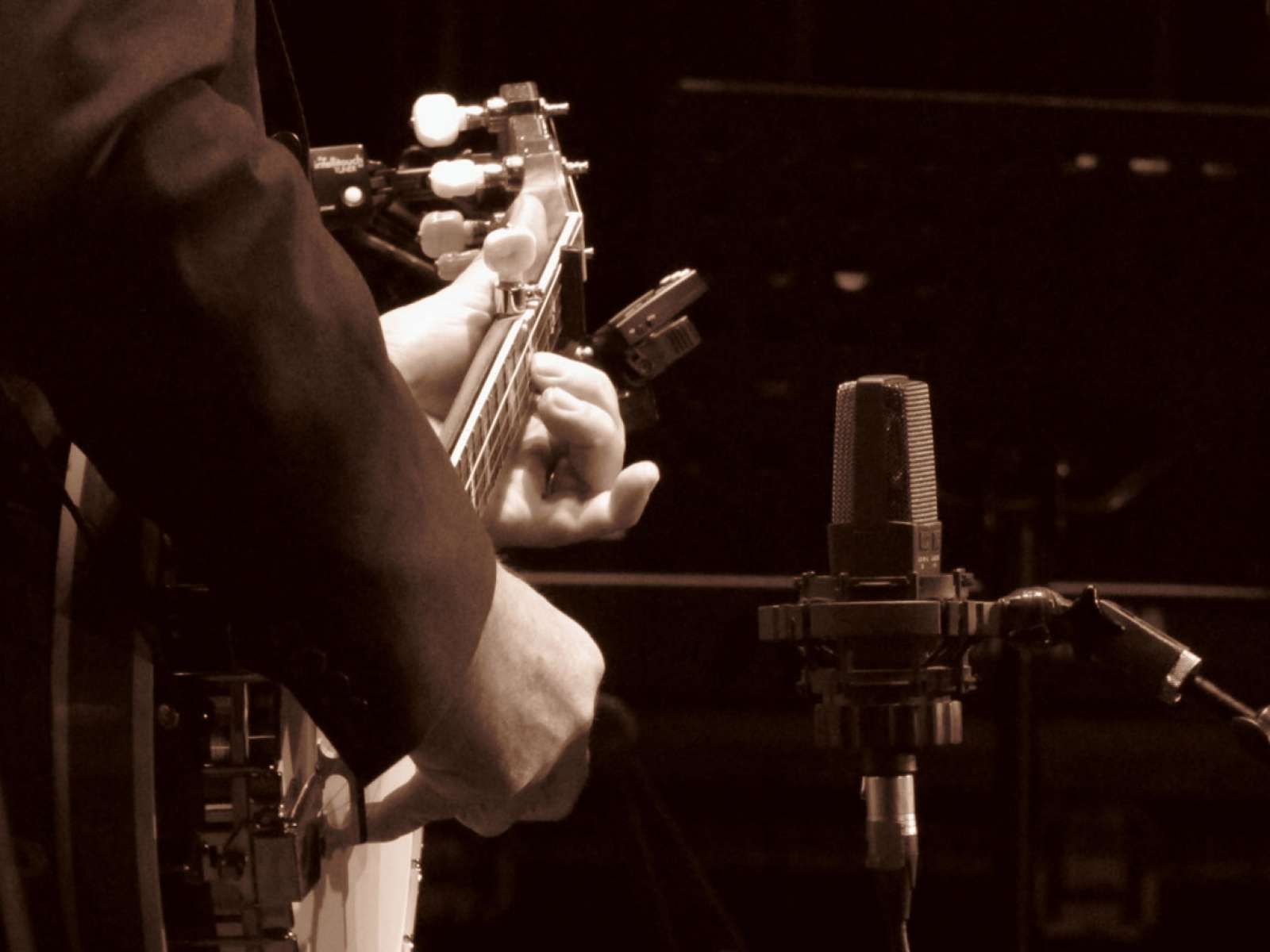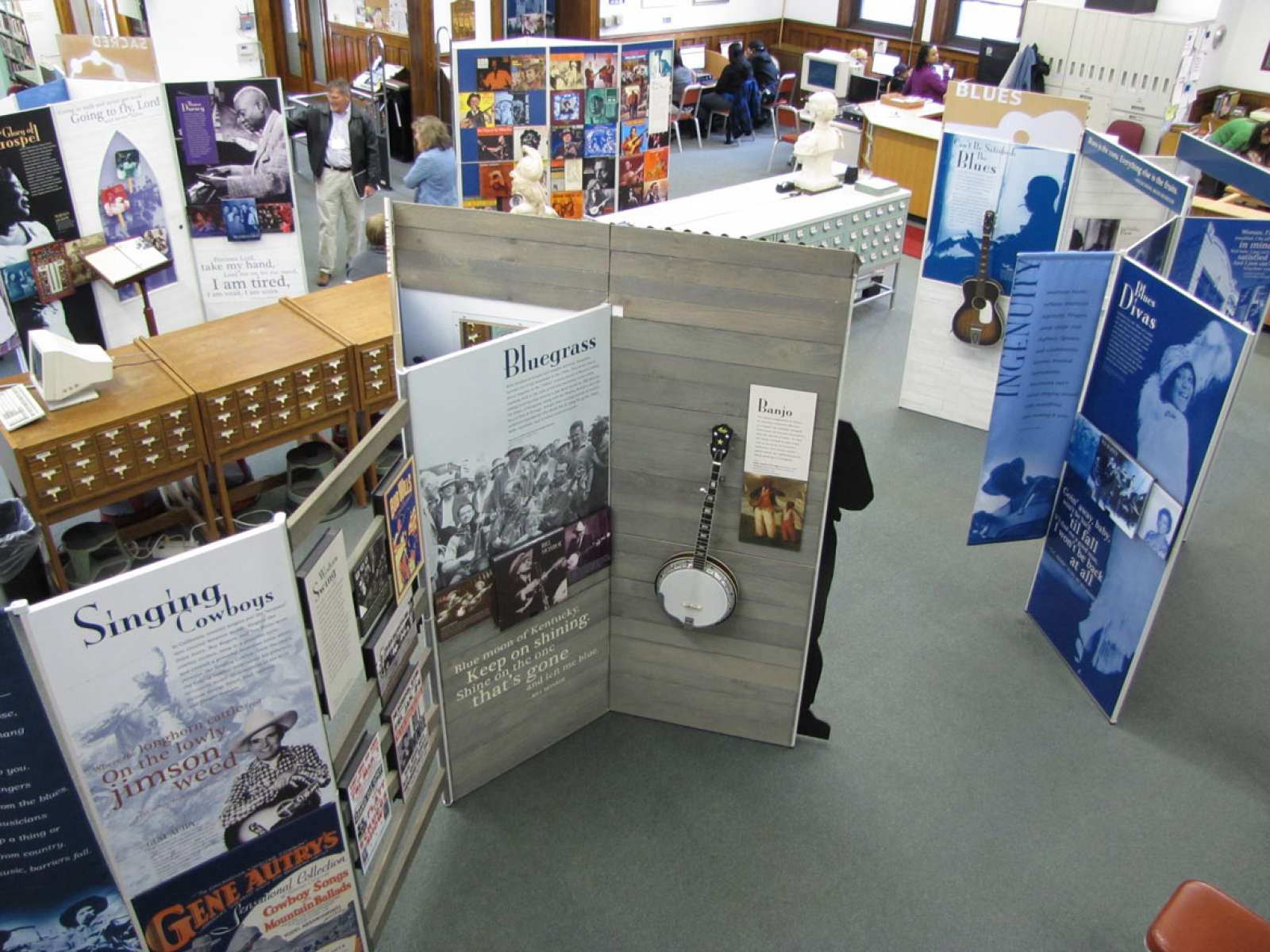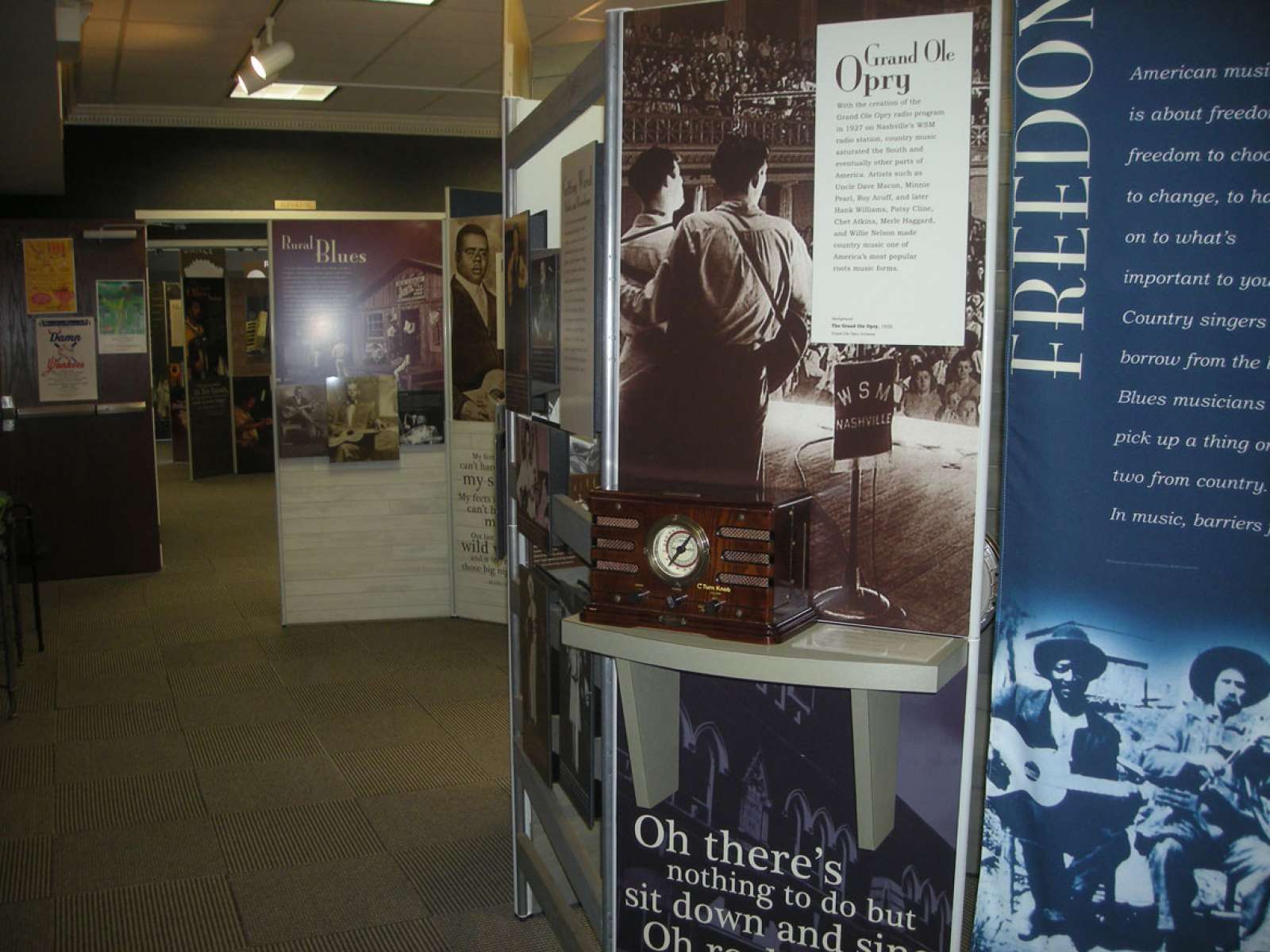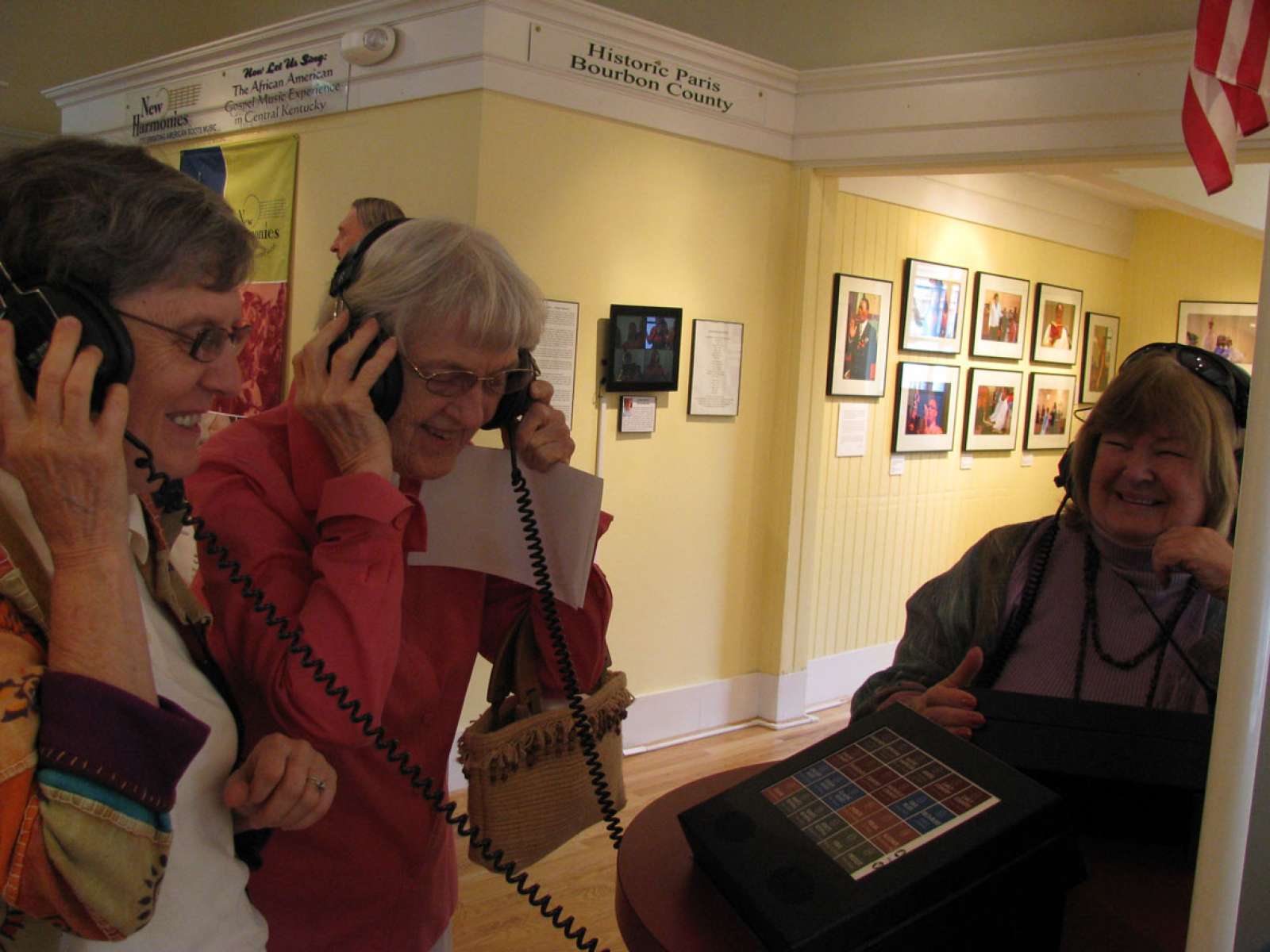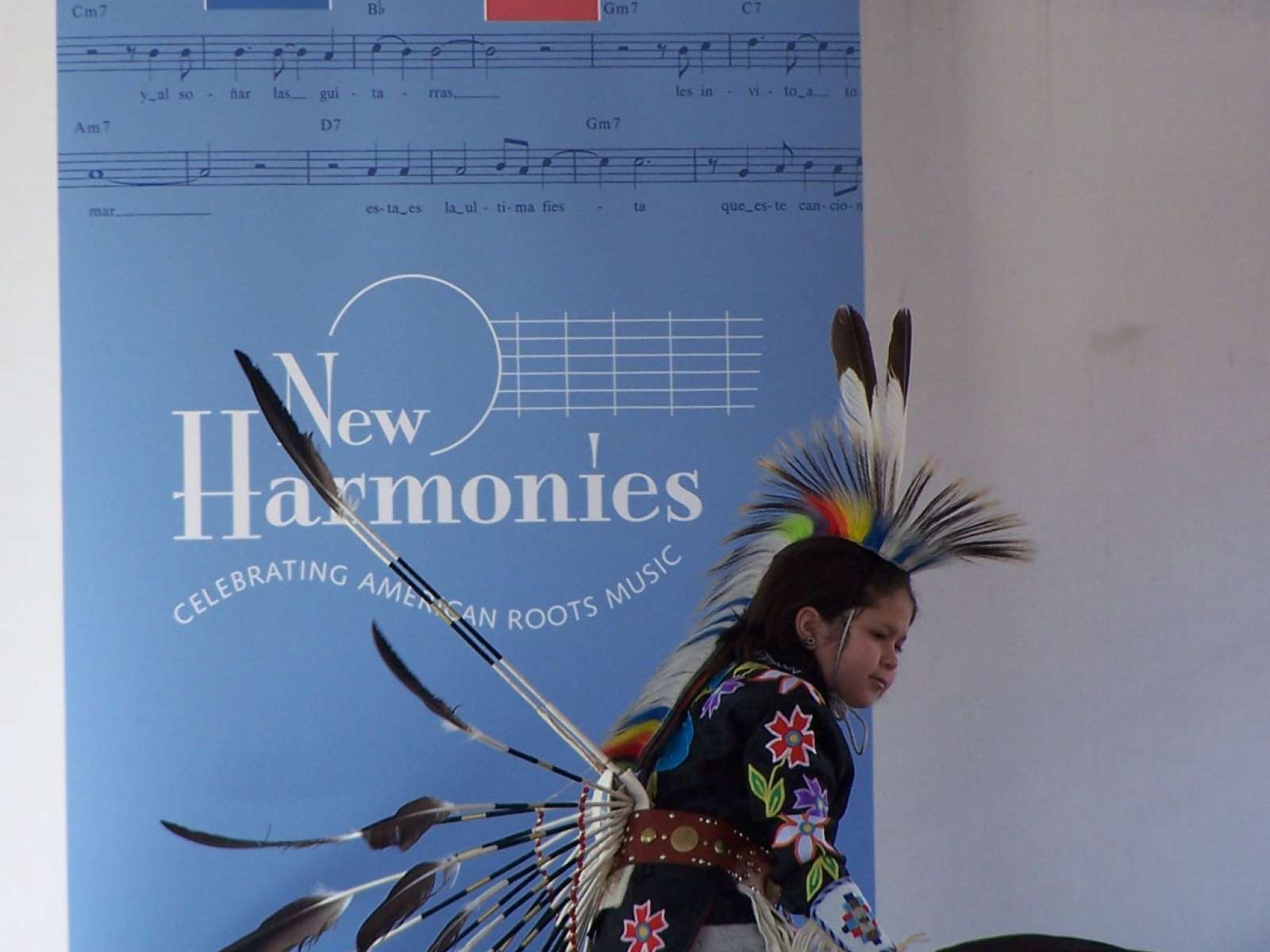New Harmonies: Celebrating American Roots Music
With New Harmonies: Celebrating American Roots Music we listen to America's music and hear the story of freedom. It's the story of people in a New World places they have left behind, and ideas they have brought with them. It is the story of people who were already here, but whose world is remade. The distinct cultural identities of all of these people are carried in song. Their music tracks the unique history of many peoples reshaping each other into one incredibly diverse and complex people --Americans.
The music that emerges is known by names like blues, country western, folk ballads, and gospel. The sounds are as sweet as mountain air, and as sultry as a summer night in Mississippi delta country. The instruments vary from fiddle to banjo to accordion to guitar to drum. But a drum in the hands of an African sounds different than one in the hands of a European. And neither is the drumbeat of an American Indian. Yet all the rhythms merge, as do the melodies and harmonies, producing completely new sounds and new music.
The main beat of the traveling exhibition was the on-going cultural process that has made America the birthplace of more music than any place on earth. The exhibition provided a fascinating, inspiring, and toe-tapping listen to the American story of multi-cultural exchange. The story was full of surprises about familiar songs, histories of instruments, the roles of religion and technology, and the continuity of musical roots from "Yankee Doodle Dandy" to the latest pop hit.
Read MoreThis exhibition is no longer touring.
This exhibition covers many themes, including:
“Roots music” is a relatively new term. It first appeared in print and conversation in the early 1980s. Originally it meant “roots of popular music or rock and roll,” but today the term has come to mean all music that has grown out of older folk traditions.
The foundations of American music lie in the religious yearnings of Native Americans, European settlers, and Africans brought to the colonies in bondage.
A wave of religious revivalism swept across the American frontier in the late 1700s and early 1800s. White missionaries reached out to black slaves for the first time, and from these encounters, a new kind of music emerged.
European settlers brought folk music with them from the Old World to the New: ballads, musical tales of love gained and love lost, and songs that reflected the cultures of the countries they left. Gradually, this music took on American traits, and European folk music was transformed into American folk traditions with American themes. As it evolved, it was called by many names—old-time music, mountain music, hillbilly music—but after World War II it matured into the sound known as “country.”
With the rise of phonographic recordings and radio in the 1920s, American roots music—particularly country music, gospel, and the blues—began to reach broader audiences, making itself heard in the most remote hills and valleys as well as the fast-growing cities. Technology sped up the process of musical cross-fertilization: gospel singers listened to “hillbilly” music, country singers listened to the blues, and everyone adapted the sounds that they liked.
With breakneck tempos and complex rhythms, bluegrass barreled out of the mountains in the 1940s. This music was a direct response to the “citified” country sound of Western swing, reaching back to the style of old-time mountain music while adding instrumental solos as a jazz band would do. Bill Monroe, the father of bluegrass, along with the Stanley Brothers and the duo of Flatt & Scruggs, brought their exciting sounds to country audiences immediately after World War II, using the guitar, banjo, fiddle, mandolin, and seamless vocal harmonies.
Looking For Exhibition Resources?
Visit our Resource Center for Exhibition Guides, Lesson Plans, Scavenger Hunts, Reading List, Docent Handbooks, Free Posters, and more!



